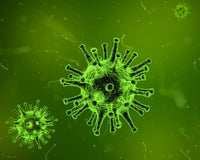What is in a Fist Aid Room?
The Health and Safety Executive (HSE) offers guidelines on first aid provisions, including recommendations for appropriate PPE. Employers should ensure that their first aid room is equipped in line with safety requirements to protect both first aid providers and those receiving assistance. First aid rooms in the workplace or education settings are common. Let's take a closer look at the important items typically stocked in these crucial spaces.
Signs
There should be clear signage in the room such as a list of first aiders, contact phone numbers and access to a phone.
Medical Supplies
One of the key components of a first aid room is a variety of medical supplies. This can include bandages, gauze, antiseptic wipes, adhesive tape, and disposable gloves. These items are essential for treating minor injuries and wounds that may occur in the workplace or other settings. A lockable first aid cabinet is recommended.
Emergency Equipment
In addition to medical supplies, a first aid room is equipped with emergency equipment to handle more serious situations. This can include items such as a defibrillator, oxygen tank, and emergency medications. Having these tools readily available can make a significant difference in critical moments. A defibrillator isn't a requirement, however it can enhance employee welfare especially if you have an ageing workforce, employees with a history of heart conditions, or if your premises is frequented by the general public, such as a restaurant or store.
Comfort and Support
First aid rooms also often contain items to provide comfort and support to individuals in need. This can include waterproof or disposable blankets and pillows, and a comfortable place to rest such as an examination couch. Creating a calming environment can help those receiving care feel more at ease during stressful situations. There should be access to hot and cold water, along with drinking water for the casualty.
Personal Protective Equipment
In the UK, the personal protective equipment (PPE) necessary for a first aid room is determined by the workplace's risk assessment. However, standard recommendations typically include:
- Disposable gloves to minimise the risk of cross-contamination.
- Face masks to provide protection against airborne infections.
- Safety goggles or other eye protection in case of exposure to splashes.
- Aprons or protective gowns to safeguard clothing from bodily fluids.
- Hand sanitiser for maintaining good hygiene or access to soap and water.
- Foot pedal bins and clinical waste disposal bags to ensure the safe removal of contaminated items.



